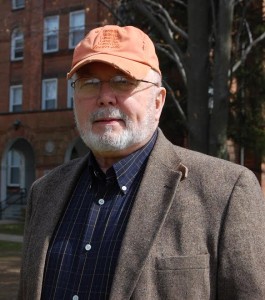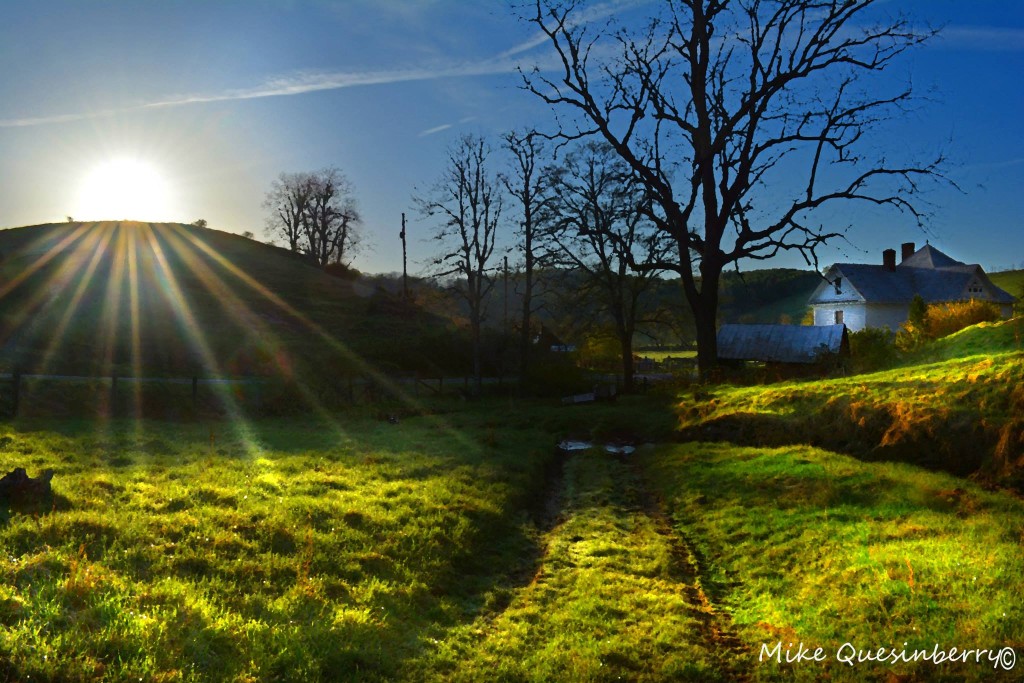Mark DeFoe’s poem “ Sago: Buckhannon, WV—January 2, 2006: 6:30 a.m. ET” appeared in the Fall 2014 issue of r.kv.r.y. focused on Appalachia. The poet Julia Kasdorf comments that she knew of the Sago Mine Disaster through Mark Nowak’s Cold Mountain Elementary (Coffee House 2009) and DeFoe’s essay on Sago published in Appalachian Journal in 2006. In 2014 she visited the miner’s memorial at Sago with students in West Virginia Wesleyan’s MFA writing program.
Kasdorf: I’m interested that you chose to write a lyric poem about the tragedy and its aftermath. Maybe you could talk a bit about the possibilities and limits in terms of genre and voice.
DeFoe: The prose piece in Appalachian Journal has a narrow scope—the media portrayal of Appalachia, media ignorance of mining and careless and lazy reporting. Prose often has a specificity, an immediacy. As a genre, I think it tends to address the concrete, the known, the “real” if you will.
Poetry, on the other hand, can lend itself to a broader scope, a wider picture that embraces present and the past, both myth and gritty reality. And of course, poetry tolerates the personal, the subjective, the lyric voice that speaks in the poem and the narrative storyteller voice.
As I described above, I was trying to accomplish two different ends in my separate writings on the meaning of Sago—using the strengths of two different genres—prose and poetry.
Kasdorf: Looking a little more closely at the poem, I’m interested in your use of epigraphs. I associate Ishmael’s voce with the lone survivor Randal McCloy Jr., but the other is more ambiguous, a statement about a culture’s relationship with time—progress, perhaps, and maybe history.
DeFoe: The quote from Moby Dick is perhaps just academic pretense on my part. I expect Randal McCloy has little in common with Melville’s character Ishmael. The passage from Jim Wayne Miller, a writer who knew Appalachia well, is more relevant in my opinion. It suggests a culture that lacks control of its destiny, that is being propelled into an unknown future by huge forces. In the case of West Virginia, I think of the energy companies and their political allies who have long exploited the people and the land for their profit. And in the poem I also rue the ignorance and short-sightedness and child-like fundamentalism of many West Virginians which continues to keep them in thrall to these powerful interests—be they coal or gas or chemical.
Kasdorf: The miners go underground like soldiers; the women remain and carry on with their lives: sacrifice, loss and resilience. Someone might call this a beautiful myth. Can you talk about this, and also the distortions of mythic narratives.
DeFoe: Dealing with myth and archetype is always a danger. But myth and even stereotype contains some truth although that truth is often buried under layers of complexity. It is hard to dig down to the truth of coal culture in one short poem—or novel or essay, for that matter. As a writer, I felt the need to say something on the events of Sago, to not let it fade away. If a writer is afraid to touch a subject because it is surrounded by myth or stereotype or ambiguity, then that writer has put a serious limitation on her or his subject matter and world view. If a writer feels the need to always be politically correct, that writer may find himself unable to speak.
Kasdorf: I notice the poem begins with a first person “I” and then shifts to “we” in the third and fourth stanzas, which is always a risky move. How dare you speak for many, someone might ask.
DeFoe: You bring up a sticky issue, Julia. It is always presumptuous to speak for others. I am very aware of that. In the poem I call myself a “bystander.” I have never been a coal miner; I was a college professor. But I have lived in Buckhannon, West Virginia since 1975. Perhaps that gives me some right to the “we” pronoun, as the poem says, to attempt “to patch the quilt of our history with words?” I did not wish the narrative voice in the poem to seem totally removed. Sago was five miles from my house.
Kasdorf: Could you talk about your choice to frame the poem with the bamboo instead of the phrases “ I think of…” which could have been a possibility?
DeFoe: I guess I wanted to bring the poem back to surface, out of the mine “where the sun never shines,” to end the poem in the beauty of West Virginia. It is an attempt to bring some hope into a sad situation. Maybe someday no one will have to go down into the dark to earn a living.
But the last lines are also tinged with irony—the voice in the poem says it is lovely to be “sucking my lungs full of good spring air.” But at the same time it is lonely to be detached, to be only an observer. a non-participant. It is an expression of survivor’s guilt, I suppose.
Julia Spicher Kasdorf is the author of three collections of poetry in the Pitt Poetry Series, most recently Poetry in America. She teaches writing at Pennsylvania State University and is currently at work on a documentary project about fracking and the natural gas boom in her home state.



Pingback: SAGO: Buckhannon, WV–January 2, 2006: 6:30 a.m. ET | Rkvry Quarterly Literary Journal